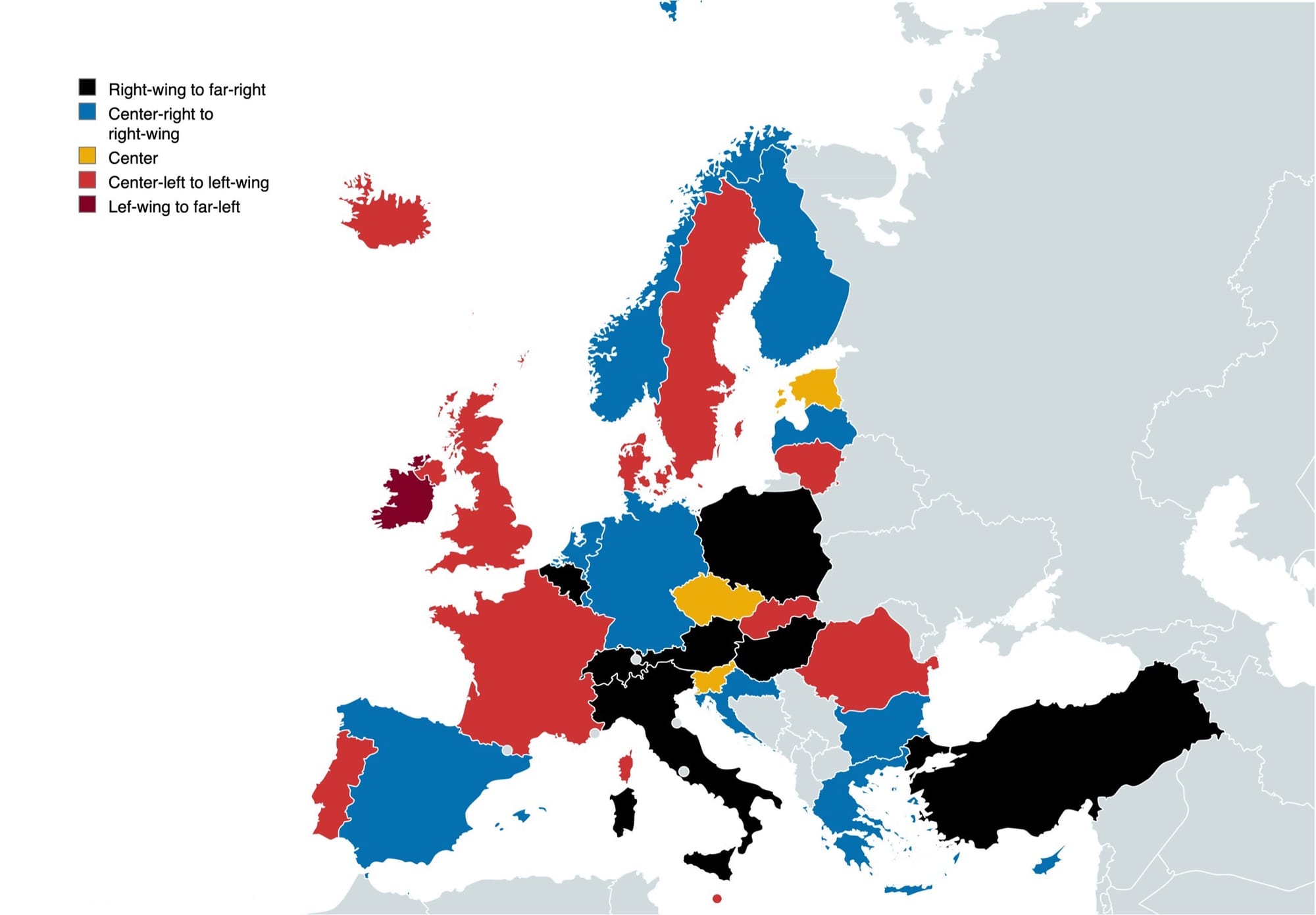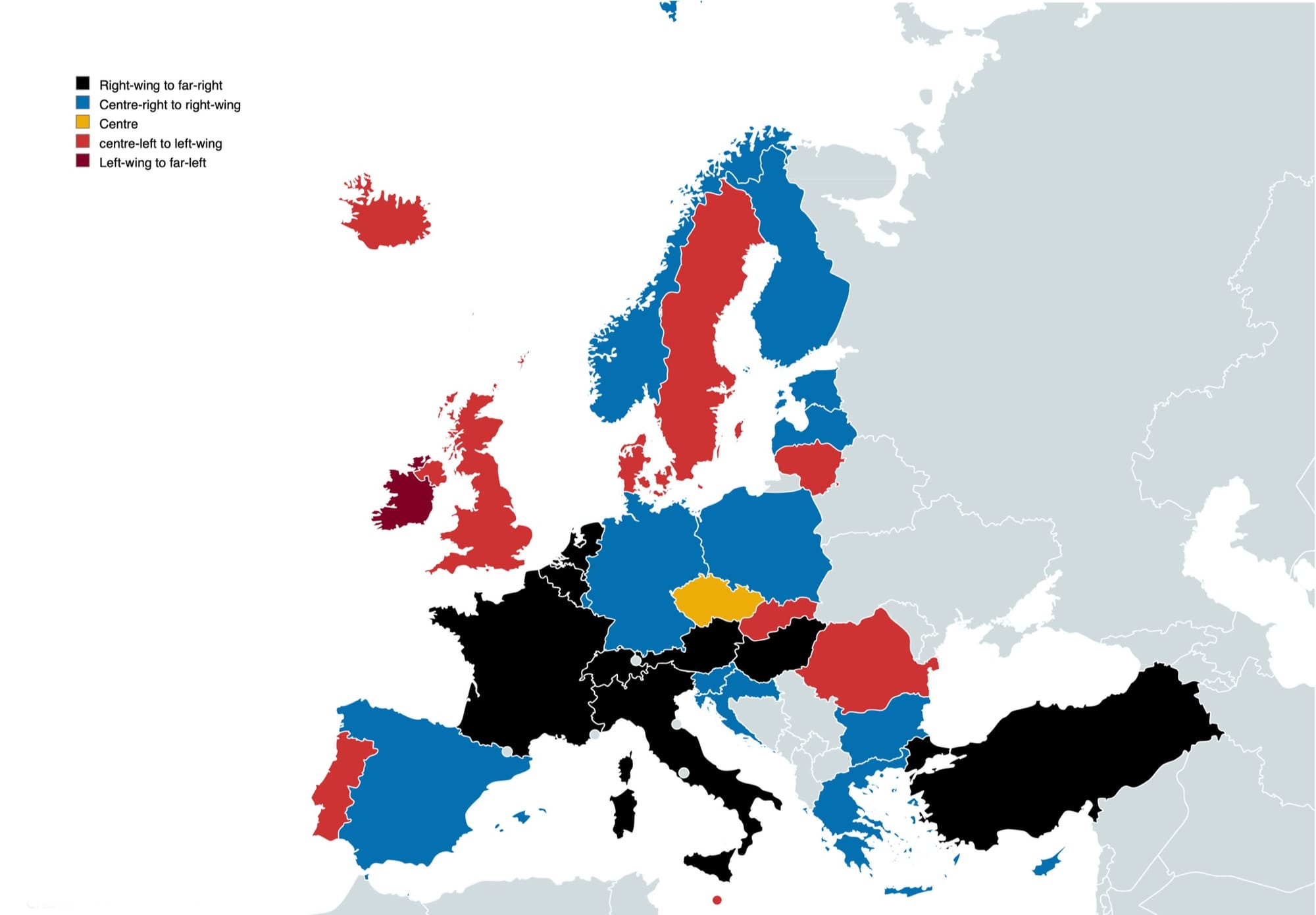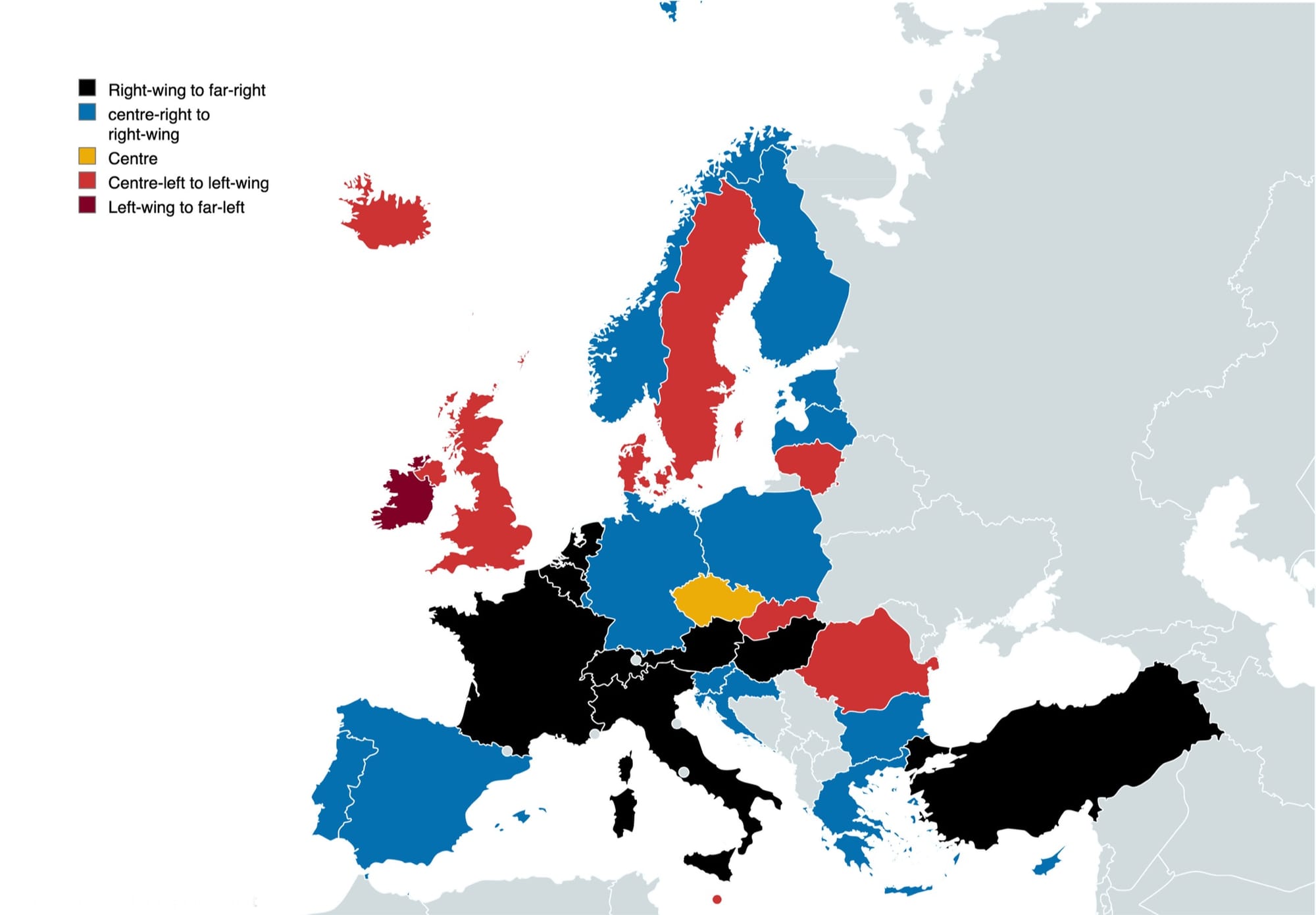Numbers Don't Lie: Rise of the Right

Moving closer to the European parliamentary election, more campaigning will be conducted in all EU member states alongside the UK (which has a general election due sometime within the next year). Campaigning influences the electorate, and sharper changes should be expected from polls, however, most nations seem to have stabilised around their largest party. Not much differs from last month, however, the trend toward the EPP’s members is undeniable, and the left-leaning sentiment of past COVID seems to be fading. Furthermore, Turkey, Switzerland, and Iceland (arranged according to population size) have been added to provide a broader European picture.
As a benchmark, the largest parties within each respective nation are shown; the largest political party can say a lot about the state of a country, what is prioritised, and what is not. The map below showcases the largest political party in most European countries just one year ago. Ideologies are classified through EU party affiliation or what the consensus agrees upon.

In many ways, this map reflects Europe very well, for a year ago. The excitement of the united left in France garnered enough momentum to overtake Mr Macron's ruling Renaissance. Dutch BBB enjoyed a surge in support, however, there was a slowdown in growth, eventually turning into a free fall. Kaja Kallas' Reform Party in Estonia plummeted after the general election, subsequently leading to the rise of the Conservative People's Party of Estonia followed by their fall and Isamaa gaining major ground. Other nations such as Sweden, Spain, and Greece had more stable polling, perhaps reflecting widespread approval or discontent depending on the party in power. Discontent in countries such as Germany and the United Kingdom contrasts with approval in nations such as Turkey and Norway. The prevailing power of Law and Justice alongside Fidesz in Poland respective Hungary seemed unbeatable. Simply put, the map showcases the tremendous growth spurt the right-wing to far-right experienced, however, it also signifies the end of this major development. The right-wing to the far right started to settle into the establishment. The liberals of Europe must have been distraught with the fall of France and the Netherlands, the centrist holdouts after the liberal golden age. The center-right to right-wing mustered 11 states, the center-left to left-wing 10 nations, right-wing to far-right 7, the center 3, and the left-held Ireland.

The right-wing to far-right has acclimated to the European political climate, being treated as any other party by the electorate in many countries. This opened the opportunity for Donald Tusk to return from Brussels and defeat the Polish PiS. Mr Tusk's leadership seems to be deeply appreciated, his party, Civic Coalition, outperformed every other party in the polls. For the first time since late spring of 2015, a party other than Law and Justice (PiS) was Poland's largest. On the other side of things, the Netherlands endorsed far-right PVV, with the party seeing the best performance ever in Polls of Polls out of any party. NR in France and Brothers of Italy continued to stabilise as the largest. The People's Party in Spain and New Democracy in Greece remained the biggest. In total, the centre-right to right-wing held 12 (+1), both the centre-left to left-wing and the right-wing to far-right garnered 8 (left losing 2 and right winning 1) nations alongside the centre and left-wing to far-left holding 1 each (centre losing 2 and Ireland remaining the same).

As of last month, only one thing has changed: Portugal just barely has a centre-right to right-wing coalition/party as its largest. However, this minor change does have some implications for the perception of the groupings size, as seen in the result. The centre-right to right-wing has 13 (+1 since February), the right-wing to far right maintains 8 (-), the centre-left to left wing shrinks to 7 (-1), and the others remain the same. This means that the right wing to far-right is bigger than the centre-left to the left wing, a shift reflecting the current right-wing sentiment of the continent. The addition of Turkey and Switzerland tips the scale in the right's favour, however, the Portuguese defection from the left is the main factor from last month.
The right is doing well currently, however, the left was doing great not long ago. These things shift easily, and next month could see the left retake its position as the second largest. However, the right-wing to far-right acting as the centre-left to left-wing's main competitor is a sign of the centre-right to right-wing's power over Europe. Blue defines the map and has become more prominent since just last year; countries such as Poland and Portugal are major additions to the portfolio and will likely help the EPP in the European Elections. The far-right's loss in Poland proves that they are not unstoppable and can be beaten when a popular candidate opposes them.



